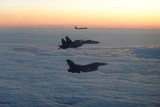What capabilities could the US supply to Saudi Arabia under the $142 billion deal?
A Saudi Arabian soldier during training. (Photo: Saudi Press Agency)
The White House’s announcement on 13 May of the US$142 billion defence sales agreement between the US and the Kingdom of Saudi Arabia has generated more questions than answers.
Although the US government claimed that it is was the largest Foreign Military Sale (FMS) in history, it is unclear what capabilities Washington will supply, what national companies will be involved in the process, and what the timeframe will be for deliveries and Riyadh payments.
Approached by Shephard, both the US Department of State and the US Defence Security Cooperation Agency (DSCA) could not respond to those queries prior to publication.
The
Already have an account? Log in
Want to keep reading this article?
More from Defence Notes
-
![US military foresees growing use of 3D printing]()
US military foresees growing use of 3D printing
Advanced manufacturing has evolved to meet military requirements and now supports multiple US critical assets, including Arleigh Burke-class destroyers, F-18, F-22, F-35, Bradley, HMMWV and Patriot.
-
![Irish Naval Service expands as the country looks to defence during EU presidency]()
Irish Naval Service expands as the country looks to defence during EU presidency
The Irish Naval Service has struggled to maintain capability, particularly in the face of lucrative private sector offers luring away personnel.
-
![Resilience, adaptiveness and collaboration vital for success in space (Studio)]()
Resilience, adaptiveness and collaboration vital for success in space (Studio)
Speakers at the Defence In Space Conference (DISC) 2025 highlighted the critical and evolving role of space in national security, defence and the global economy.
-
![Why the NORAD inventory might be the US and Canada’s Achilles’ heel]()
Why the NORAD inventory might be the US and Canada’s Achilles’ heel
Both the US and Canada operate Cold War-era capabilities which cannot defeat today’s and tomorrow’s threats.
-
![Companies’ results boom as countries dig deep to buy missiles and air defence systems]()
Companies’ results boom as countries dig deep to buy missiles and air defence systems
Air defence systems are continuing to appear top of countries’ shopping lists but broadly across different capabilities it is a sellers’ market, as demonstrated by backlogs and double-digit percentage point growth.
























